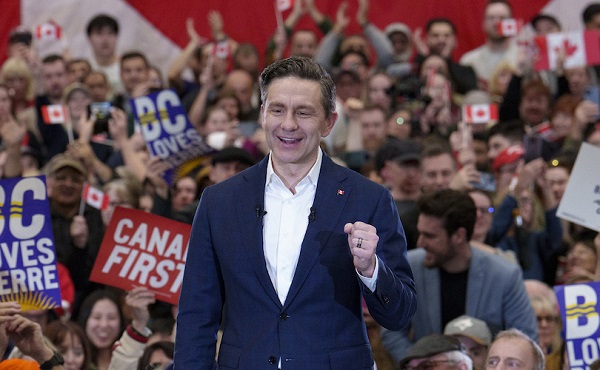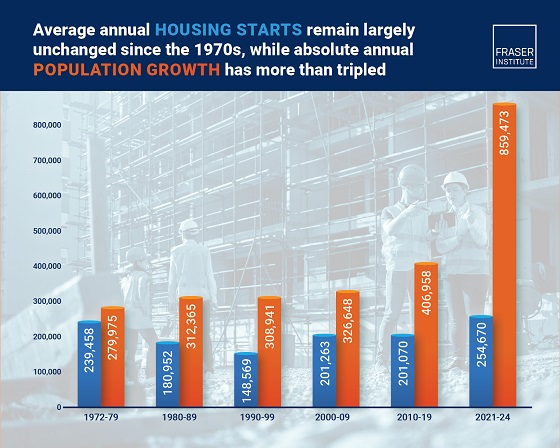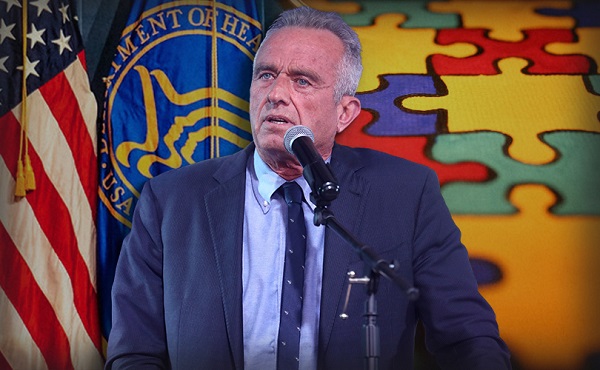Christopher Rufo
Independent reporter takes on CBS News for contradicting his report “Cat Eaters of Ohio”

Fact Checking the Fact Checkers
Monday, CBS News published a story attempting to contradict our reporting on cat-eating in Dayton, Ohio. I published a rebuttal to the story on the social media site X, which I have reproduced here.
CBS News has published a response to the “Cat Eaters of Ohio” story. It’s a supremely dishonest and completely partisan report, but let’s break it down, to show exactly how the establishment media maintains its lines of propaganda.
Christopher Rufo is a reader-supported publication. To receive new posts and support my work, consider becoming a free or paid subscriber.
The CBS report hinges on two arguments. First, CBS writes: “The video shows what appears to be animal carcasses on a grill. The man filming the footage alleges, without evidence, that they are cats.” Without evidence? The eyewitness directly observed the incident and took a video recording of it—both of which are firsthand evidence. But CBS’s apparent standard, when such evidence violates the establishment narrative, is: Don’t believe your lying eyes.
The report also quotes Dayton’s Democratic mayor, who says there have been “absolutely zero reports of this type of activity.” Which is true, but does not contradict the evidence at all. Nobody filed a police report, so there would be no police report—and the absence of a police report does not mean that something did not happen. This is a convenient way of ignoring the evidence, and laundering lies through friendly media apparatus.
What did CBS not do? Journalism. The network, which has massive resources, did not send a reporter to the scene, interview the eyewitness, interview the neighbors, investigate the visual evidence, conduct background research, or provide a detailed analysis. They simply adopted “don’t believe your lying eyes” as their standard and repeated an empty, evidence-free statement from a partisan political figure. Now, I’d like to take you through exactly how we produced the story and analyzed the evidence. This is precisely the case that I made in the original piece, that the establishment media is more interested in denial and obfuscation, even when the evidence points the other way.
Sourcing
An individual in my personal social network reached out with a tip and a link to the social media post with the video. (This source neither requested, nor received, the monetary prize I had posted on social media a few days prior.) Our team then collected the timestamped social media from August 2023, which was still live. We tracked down the author, authenticated the video, matched it to his voice, and conducted an interview by phone, in which he confirmed the key details of the story.
The following day, we had the author bring us to the location and make introductions, had a team member conduct background research, and sent a reporter into the field to make observations and conduct interviews. To confirm the exact location of the video, we matched the visual elements in the picture to the visual elements on the scene, down to matching knot patterns in fence planks, which provided us with the precise address and camera position relative to the scene. For extra care, we also cross-referenced the visual evidence with street and satellite images, plus residential property records.
Eyewitness Account
Our interview with the eyewitness matched the details of the original video and was unambiguous in its conclusion: “This African dude next door had the damn cat on the grill. They was barbecuing the damn cat!” The eyewitness was familiar with the African families in the housing complex (his son played with their children) and his child’s mother, who lived next door to the Africans, had observed them on at least one occasion butchering a large mammal on the street. The eyewitness had a close, unmediated look at the incident and maintained a consistent story over one year, to multiple different groups, including his own peer group. He is familiar with barbecuing and, like anyone, is familiar with cats. The source of his initial shock was that the animal on the grill was not a chicken, burger, hotdog, or other usual fare.
Again, he witnessed the incident firsthand, recorded a video, and maintained a consistent story over a year. This is all direct evidence, contrary to CBS News’s disingenuous claim.
Field Interviews
Our field reporter spoke with a half-dozen people in the housing complex, who confirmed the following details: all of the residents of the complex were migrants from Africa, most commonly the Congo; they were familiar with the eyewitness, his child’s mother, and his son; they told us another African family had recently moved out of one of the units; this family owned and used a blue grill; the father would go out with a knife and gather meat; there were stray cats breeding on the property and some residents wanted to get rid of them.
We also made the following direct observations on the scene: we matched the visuals in the video to the location; we found an abandoned grill that matched the make, model, and color in the video and the descriptions in the interviews; we noticed that there were at least ten cats on the property, which appeared to be strays and were very comfortable with the residents, coming onto the porches and milling around the exterior of the house.
Background Research
Our research team learned that there is a tradition of cat eating in the Congo and surrounding nations. We also learned that, since at least 2021, Dayton has accommodated a relatively large number of migrants from the Congo. By chance, one of our in-house researchers had experience dissecting cats and studying their anatomy. In addition, we spoke on background with a chicken farmer, surgeon, biologist, hunter, and medical professor.
Forensic Analysis
Over the weekend, some left-wing conspiracy accounts on social media began claiming that the animals were chickens, rather than cats. We asked our experts to provide forensic analysis and their opinion.
The chicken farmer, who has processed thousands of animals per year, confirmed that it could not be a chicken in the video:
- “The most obvious evidence is that the claws on the grill are facing the wrong way for it to be an avian creature. Size-wise the only poultry [the claws] could credibly be compared to is a Cornish game hen or something small, but the carcasses are much larger than that. Literally any poultry farmer or butcher would tell you that’s not a chicken or a waterfowl.
- “A bird wouldn’t be able to rest upside down like that. Its heavy legs would cause it to flop to one side or another, or the legs would just drop down to either side … There’s no way for a bird to naturally sit that way. They’re bottom-heavy creatures.”
- “The legs are too skinny [to be a chicken]. The ‘drumstick’ even on a laying hen would be much meatier. Number two is that, even if it were a bird, the talons are facing in the wrong direction. But they are in the right direction for cat’s paws. They are basically claiming that the two legs on the left are those of a chicken, and that its butt is somehow propped in the air. First of all, why would it be propped in the air? … But more importantly, why would the drumsticks be stuck up in midair? For a quadruped like a feline this makes sense (they are the front legs) but not an avian creature which has one set of legs with a sort of folding joint in them. If the bird were face up as they are claiming, the legs would fold down onto the thighs, not project straight into the air.”
- “The feet of a chicken or a waterfowl are much larger in proportion to the carcass than what’s in the video. Whereas the proportion fits that between a cat’s leg and paw. When you shoot a cow or sheep or pig, they might fall and roll onto their back with their legs straight up in the air like the cat is. Because they’re also quadrupeds. Not possible with a chicken because it just has a totally different leg structure. Made to do different things.”
We also spoke with a surgeon, who also has practical experience with animals, explained that the proportions of the animal, particularly the “ilium-to-scapula distance,” resemble a mammal, more specifically, a cat, rather than a chicken:
- “It’s fascinating how different animal species have remarkably similar skeletal structures – the humerus is proximal to the radius, the sternum anterior to the scapula – but the relationship of those bones to each other is what largely differentiates one animal species to the next, not only in appearance but also in function.”
- “[In the video,] you can see that a cat has a greater distance between the scapula and the ilium. This provides more space for the abdominal organs (i.e. small bowel, liver) between the thoracic cavity and the pelvis. When the legs are stretched, a 90-degree angle is formed between the legs and the pelvis/abdominal cavity (as can be seen in the picture).”
- “In contrast, a chicken has a very short distance between the scapula and the ilium. The reason for this is that the abdominal organs are located more caudally (i.e. towards the tail). When a chicken’s legs are stretched, this exaggerated 90-degree angle (as is seen in the video) is absent because the thoracic cavity is so close to the pelvis – hence, short distance between the scapula and ilium.”
- “The animals in the video are cats and not chickens due to the pronounced right angle between the legs and the abdomen that occur as a result of a longer ilium-to-scapula distance.”
Conclusion
The CBS News report is not credible and does not make any attempt to investigate the facts. Rather, it simply denied the eyewitness account and firsthand video as “without evidence”—a logical contradiction—and copied a statement from the Democratic mayor, who also did not investigate the matter. There is no indication that CBS sent a reporter into the field, conducted any interviews, or provided any visual analysis. There is no indication that CBS even knows where the incident occurred, something that took our team some time on the ground.
As I wrote in my original piece about the story, the establishment media wants to maintain a line of propaganda and wish away any evidence to the contrary, appealing to authority rather than the facts. This is dishonest and does a disservice to productive debate.
Christopher Rufo is a reader-supported publication. To receive new posts and support my work, consider becoming a free or paid subscriber.
Automotive
Trump Must Act to Halt the Tesla Terror Campaign

 Christopher F. Rufo
Christopher F. Rufo
The Left’s splintering violence threatens a veto over democratic power.
Elon Musk finds himself at the fulcrum of American life. His companies are leading the field across the automotive, space, robotics, and AI industries. His ownership of the social platform X gives him significant influence over political discourse. And his DOGE initiative represents the single greatest threat to the permanent administrative state. Musk is arguably the most powerful man in the United States, including President Trump.
The Left has taken notice. Left-wing activists have long practiced a tactic called “power mapping,” which entails diagramming the opposing political movement and identifying “chokepoints.” They have designated Musk as one such chokepoint. This month, activists claimed to have organized 500 protests against Elon Musk’s Tesla—dubbed the “Tesla Takedown”—with demonstrations outside sales lots and a series of incidents of vandalism, property destruction, and fire bombings. A pattern has also emerged of individuals scratching or spray-painting parked Teslas, looking to intimidate owners and potential owners or just to express hatred of Musk.
Precedents exist for this kind of escalation. In the 1970s, following the frustrations of the civil rights era, left-wing splinter groups launched targeted terror campaigns and symbolic acts of violence. They bombed the U.S. Capitol, assassinated police officers, and even self-immolated in imitation of Buddhist monks. We may be entering a similar phase today, as the collapse of the Black Lives Matter movement gives rise to radicalized left-wing factions willing to embrace violence. If so, Musk’s Tesla may be the Number One target.
What, exactly, motivates this campaign? At its core, the Left appears to be shifting from an “antiracist” narrative to an anti-wealth one—from a racial frame to an economic one. The sentiment driving the Tesla Takedown is rooted in economic resentment and a desire for leveling. Musk has become a symbol of everything progressives oppose: oligarchy, capitalism, wealth, and innovation. These, in their view, are marks of the oppressor. They scorn the futuristic Cybertruck, SpaceX rockets, and Optimus robots, believing that such creations should be dismantled and repurposed into chassis for public buses or I-beams for public housing.
A certain element of left-wing Luddism is at work here, but the greater part of these activists’ motives is resentment. Musk represents the triumph of the great man of industry, something the Left believes should not exist.
Unfortunately, the Tesla Takedown may succeed. The Left has likely identified Tesla as a chokepoint because it’s easier to dissuade consumers from buying a car they associate with a malevolent political cause—or fear might be vandalized—than it is to persuade them to buy one in support of Musk and DOGE. When it comes to purchasing a Tesla, fear among the average American is a more powerful motivator than enthusiasm among the MAGA base.
Some evidence suggests that the campaign has made an economic impact. Tesla stock peaked around the time of President Trump’s inauguration and since then has lost approximately 40 percent of its value. Musk has accumulated more power than any other American, but that means that he has more points of vulnerability. His wealth and power are tied to his companies—most importantly, his consumer car company, which depends on individual purchases rather than institutional contracts (like SpaceX).
Trump has signaled that he understands this dilemma. He appeared at the White House in a Tesla and has voiced support for Musk’s firms. Justice Department prosecutors—and their allies in state government—must translate this support into policy by identifying and punishing those who destroy property as a means of political intimidation.
The administration needs to make clear that radical left-wing factions cannot use violence to wield a veto over democratic governance. If the partnership between Trump and Musk is to produce meaningful results, it must be backed by the full protection of the law.
Business
The NSA’s Secret Sex Chats

|
|
Intelligence officials maintained a chatroom to discuss polyamory and transgender surgeries, internal documents reveal.
The “intelligence community” is one of the most powerful parts of the American national security apparatus. In theory, it works tirelessly to keep the nation safe. But according to internal documents that we obtained, some intelligence agency employees have another on-the-job priority: sex chats.
We have cultivated sources within the National Security Agency—one current employee and one former employee—who have provided chat logs from the NSA’s Intelink messaging program. According to an NSA press official, “All NSA employees sign agreements stating that publishing non-mission related material on Intelink is a usage violation and will result in disciplinary action.” Nonetheless, these logs, dating back two years, are lurid, featuring wide-ranging discussions of sex, kink, polyamory, and castration.
One popular chat topic was male-to-female transgender surgery, which involves surgically removing the penis and turning it into an artificial vagina. “[M]ine is everything,” said one male who claimed to have had gender reconstruction surgery. “[I]’ve found that i like being penetrated (never liked it before GRS), but all the rest is just as important as well.” Another intelligence official boasted that genital surgery allowed him “to wear leggings or bikinis without having to wear a gaff under it.”
These employees discussed hair removal, estrogen injections, and the experience of sexual pleasure post-castration. “[G]etting my butthole zapped by a laser was . . . shocking,” said one transgender-identifying intel employee who spent thousands on hair removal. “Look, I just enjoy helping other people experience boobs,” said another about estrogen treatments. “[O]ne of the weirdest things that gives me euphoria is when i pee, i don’t have to push anything down to make sure it aims right,” a Defense Intelligence Agency employee added.
These revelations come at a moment of heightened scrutiny for the intelligence community. President Donald Trump, Defense Secretary Pete Hegseth, and Director of National Intelligence Tulsi Gabbard have each made the case that the intelligence agencies have gone “woke,” prioritizing left-wing activism over national security. These chat logs confirm their suspicions and raise fundamental questions about competence and professionalism.
According to our sources, the sex chats were legitimized as part of the NSA’s commitment to “diversity, equity and inclusion.” Activists within the agency used LGBTQ+ “employee resource groups” to turn their kinks and pathologies into official work duties. According to the current NSA employee, these groups “spent all day” recruiting activists and holding meetings with titles such as “Privilege,” “Ally Awareness,” “Pride,” and “Transgender Community Inclusion.” And they did so with the full support of NSA leadership, which declared that DEI was “not only mission critical, but mission imperative.”
In this case, “diversity” was not a byword for racialism, but rather a euphemism for sex talk. Last January, chatroom members discussed their practice of polyamory, or “ethical non-monogamy.” “[A] polycule is a polyamorous group,” one employee explained. “A is my [girlfriend], and B-G are her partners. . . . then B&C are dating but not C&D, nor E, F, or G with any of the others, though there are several MWB (metas-with-benefits) connections.” Another employee claimed to be part of a nine-member “polycule,” adding that “some of our friends are practically poly-mers, with all the connected compounds.”
At other times, the conversations became explicit. The active source at the NSA claimed to have witnessed hundreds of sexually provocative discussions, which, he added, occurred mostly on taxpayer time. The former NSA source who was familiar with the chats recalled being “disgusted” by a particularly shocking thread discussing weekend “gangbangs.”
The NSA sources also raised the question of some staffers’ mental fitness for the job. In one chat, an NSA employee insists on using “it” pronouns in lieu of the human “he” or “she” pronouns. “[I]t/its user here. While I understand we can make some people uncomfortable, keep in mind that the dehumanizing aspect either a) doesn’t apply or b) is a positive effect when we’re requesting it.” A commenter who disagreed was quickly dismissed by employees of the NSA and CIA, who claimed that refusing to use “it/its” pronouns amounted to “erasing” a transgender identity.
“These are folks with top secret clearances believing they are an IT!” said the NSA source.
With the Trump administration taking over, we may see changes. The NSA source said that staffers involved in employee resource groups fear the end of DEI. “[T]here are legal restrictions in place, but this admin has shown they don’t give a f**k about legality,” a staffer in space intelligence remarked about DEI staffers being placed on leave. Others have expressed opposition to Trump’s cabinet nominees.
A conflict is coming. These NSA chat logs suggest the presence of at least hundreds of gender activists within the intelligence services who cannot distinguish between male and female, and who believe that discussing castration, polyamory, and “gangbangs” is an appropriate use of public resources. For psychological and ideological reasons, these kinds of people will not be easily sidelined. The Trump administration should not only dismantle the structure of DEI but also terminate the employees who use it to advance gender activism at the expense of national security.
 |
A guest post by
|
Subscribe to Christopher F. Rufo.
For the full experience, upgrade your subscription.
-

 illegal immigration2 days ago
illegal immigration2 days agoDespite court rulings, the Trump Administration shows no interest in helping Abrego Garcia return to the U.S.
-

 2025 Federal Election2 days ago
2025 Federal Election2 days agoEuthanasia is out of control in Canada, but nobody is talking about it on the campaign trail
-

 2025 Federal Election2 days ago
2025 Federal Election2 days agoConservative MP Leslyn Lewis warns Canadian voters of Liberal plan to penalize religious charities
-

 2025 Federal Election2 days ago
2025 Federal Election2 days agoHousing starts unchanged since 1970s, while Canadian population growth has more than tripled
-

 Education2 days ago
Education2 days agoSchools should focus on falling math and reading grades—not environmental activism
-

 2025 Federal Election16 hours ago
2025 Federal Election16 hours agoRCMP Whistleblowers Accuse Members of Mark Carney’s Inner Circle of Security Breaches and Surveillance
-

 Autism1 day ago
Autism1 day agoAutism Rates Reach Unprecedented Highs: 1 in 12 Boys at Age 4 in California, 1 in 31 Nationally
-

 Bjorn Lomborg1 day ago
Bjorn Lomborg1 day agoGlobal Warming Policies Hurt the Poor








